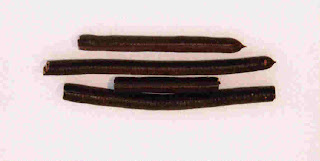Wealthy Chinese short sellers a source of future demand?
Koos Jansen latest piece on gold leasing and short selling within China is a must read. There seems to be two basic "gold trades" used by wealthy Chinese:
Finance business by Lease and Hedge
1. Lease gold from bank
2. Sell gold on SGE
3. Post 15% of cash from #2 as margin against long gold futures
4. Use remaining cash from #2 to fund your business
5. At end of lease, take delivery of futures and use physical to repay lease
The article says that the effective interest rate on the amount of cash left over from #4 works out at 6.7% compared to around 9% for a conventional loan.
Finance business by Lease and Short Sell
1. Lease gold from bank
2. Sell gold on SGE
3. Use cash to fund your business or other investment
4. At end of lease, buy back gold (which has hopefully fallen) and repay lease
Needless to say, the second method is highly risky and is more a combination of financing your business plus a speculative bet on gold prices. Here are some interesting quotes that give a different insight into the thinking of some wealthy Chinese that is at odds with the common view (narrative) about how Chinese view gold (which is that they are buy and hold investors):
- "these business owners, in the background of gold’s 28% pullback in 2013, remain bearish on gold ... hope to buy back the same amount of gold to repay and get the spread when gold falls further to their targets in 2014"
- "A business owner signed a 3-month gold lease agreement at the end of last year and sold the gold at $1300/oz. He said he would buy back and return the gold when gold fell to $1150/oz in Q1 2014 and pocket the $150/oz difference."
- "some rich people even use the funds through gold lease to invest in high yield real estate trust products to achieve “getting something from nothing”. The spread between the yield on trust products and gold lease rate is risk free in their eyes."
While banks limit gold leasing to those legitimately involved in the gold business who need to finance their physical inventory, it appears that some gold merchants have excess physical stocks. They are therefore willing to lend this out to private investors (who put up cash margin and real estate as collateral). Alternatively, it seems people can create fake gold business to access this market.
Koos' article is similar to a trade identified by FT Alphaville in August, where "Chinese firms have been able to benefit from cheaper US interest rates by using various commodities with high value-to-density ratios, such as gold, copper, nickel and “high-tech” goods, as collateral. The deals were motivated by the fact that borrowing US dollars in this collateralised fashion was cheaper than borrowing in the domestic Chinese market."
See also this GFMS note "our information collection from various trade sources indicated that these Hong Kong export numbers have been highly inflated by growing round tripping between mainland China and Hong Kong whereby local companies used gold to engage in currency and interest rate arbitrage transactions" This would make sense in light of Koos' research that says that the same bar cannot be traded back on to the SGE - maybe a way around this is to export gold out of China and reimport as "new" gold (I have been able to confirm that bars are being exported out of China as part of this trade).
There are a number of implications from this story:
- How much of the gold that we have seen being imported into China is just tied up in these trades?
- Has this Chinese short selling impacted negatively on the gold price?
- When will the unwinding of these short selling deals happen?
- What will be the impact on the gold price when these short selling deals are unwound?
The FT Alphaville article noted that the copper collateral scheme may have raised between $35-40 billion. Gold is a lot more value dense than copper, so realistic to think that the gold collateral trade is of the same or greater size?
I would also note that exports from China to Hong Kong (the round tripping trade) really began to pick up in March 2012, when it was clear that the gold price had peaked. The quotes above indicate that some wealthy Chinese took a bearish view on gold and maybe March was when this short selling trade started to pick up. It is also interesting that this chart of Koos shows big differences developing between SGE withdrawals and all known supply in April 2013, on the price smash. Did the price smash encourage more bearish bets, which would have resulted in gold within China held by industry users being released and sold on the SGE? Maybe Koos can run this chart back a few years so we can see if this gap only developed once gold peaked.
Koos article closes with the observation that "many real estate investment products are facing default risks and on the other, gold lease arbitrage is facing the volatility of gold price. If these 2 risks occur at the same time, this seemingly risk-free arbitrage could be in fact “picking pennies in front of a bulldozer.”"
I am sure that is the majority view of Chinese and this short selling is limited to a few, but China is a big market and this trade could still be significant in terms of the global gold trade. Maybe we have just found another source of potential future demand should these Chinese short sellers come to the view that gold has bottomed.

Comments
Post a Comment